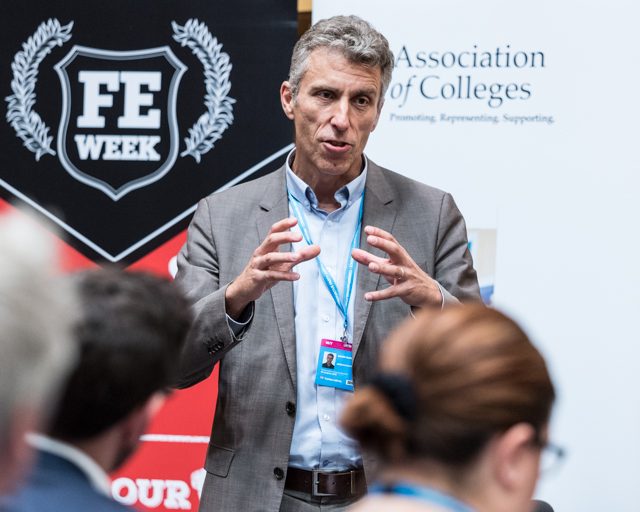The government is being urged to increase funding for 16- to 18-year-olds ahead of this year’s autumn statement, as two thirds of sixth form colleges report dropping courses due to cost pressures.
The worrying figure is a key finding of the Sixth Form Colleges’ Association annual funding impact survey, the results of which are published today.
It is based on responses from 80 out of 90 of all SFCs, 53 (66 per cent) of whom said they had dropped courses as a result of funding cuts and cost increases.
The majority of SFCs (58 per cent) have also reduced or removed extra-curricular activities available to students including music and drama, sport and languages.
SFCA chief executive Bill Watkin (pictured above) called the findings a “wake-up call” to the government and urged ministers to take action.
“The message from the most effective and efficient providers of sixth form education is clear – more investment from government is essential if sixth form colleges, school and academy sixth forms are to continue providing young people with the high quality education they need to progress to higher education and employment,” he said.
The SFCA’s report comes ahead of the autumn statement on November 23, which will set out the government’s spending plans over the coming months.
The Association of Colleges has also called for greater funding for 16- to 18-year-olds in its autumn statement submission, published earlier this month.
An increase in the base rate for 16 and 17-year-olds, currently £4,000, was further needed to “avert a funding crisis in academic and technical education for that age group,” the AoC said.
The 2015 spending review and autumn statement was less damaging for the FE sector than previously feared.
Former chancellor Mr Osborne said at the time: “We will not, as many predicted, cut core adult skills funding for FE colleges – we will instead protect it in cash terms.”
“We will maintain the current national base rate of funding for our 16 to 19-year-old students for the whole parliament.”
The SFCA report said that last year’s funding impact survey had been “influential” in securing this commitment from the government, which it said was “clearly preferable to a further cut”.
But it noted that the funding freeze came after three rounds of funding reductions, which left SFCs particularly hard-hit.
It said: “While the underfunding of 16-19 education affects all providers, the impact on SFCs is particularly acute as they enrol more disadvantaged students and cannot cross subsidise from 11 to 16 funding as many schools and academies do.”
The report also noted that one “glaring inequality” between SFCs and other sixth forms was the “absence of a VAT refund scheme”, which meant that SFCs had on average £385,914 less to spend on education over the past year.
The announcement in last year’s spending review that SFCs could convert to academy was intended to address this VAT issue.
And according to the SFCA survey, 69 per cent of SFCs are now actively exploring academisation.
The AoC also addressed the VAT issue in its autumn statement submission, and pressed for VAT to be “removed from all publicly funded education” for 16- to 18-year-olds “on the day that the UK leaves the EU”.
When invited to respond to the SFCA survey findings, a DfE spokesperson said: “Every young person should have access to an excellent education and we have protected the base rate of funding for all post-16 students until 2020 to ensure that happens. We’ve also ended the unfair discrimination between colleges and school sixth forms and we now ensure funding is based on student numbers rather than discriminating between qualifications.
“On top of this we are providing more than half a billion pounds this year alone to help post-16 institutions support students from disadvantaged backgrounds or with low prior attainment.”



